This pasta carbonara recipe is rich, creamy, and full of savory, cheesy flavors. With fresh spaghetti, crispy guanciale, and a crunchy pangrattato topping, it’s a simple but elevated take on the Italian classic.
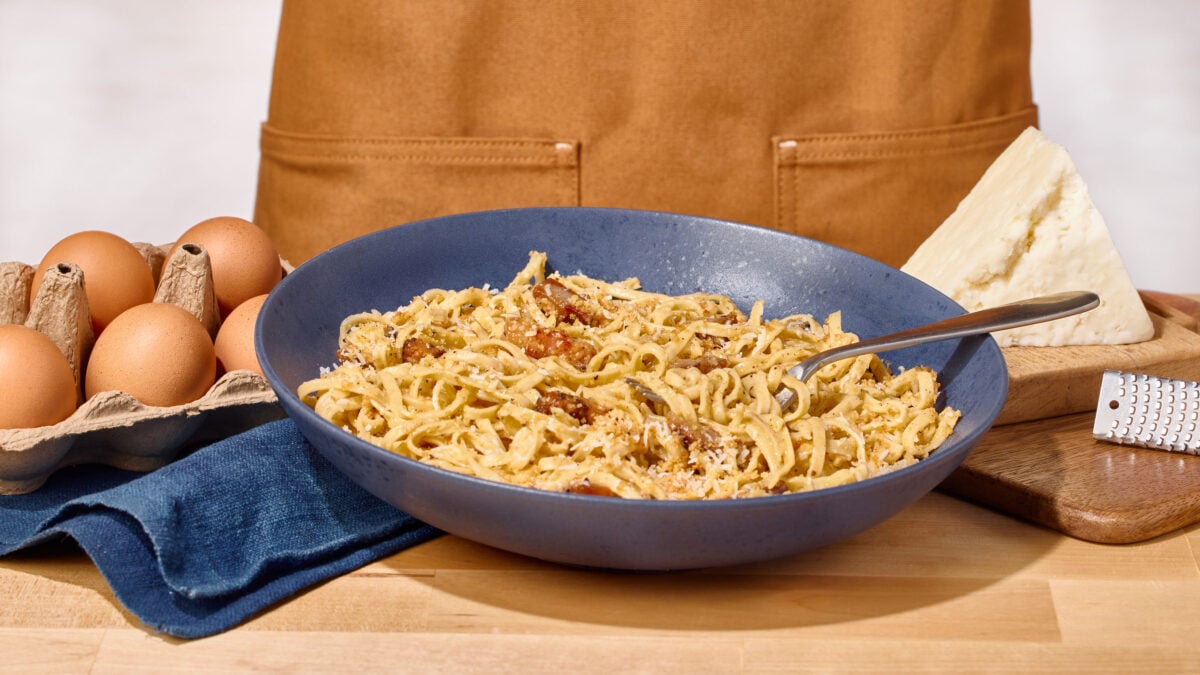
Pasta is something I never get tired of making. Some weeks it’s a quick pesto pasta, other times it’s a slow-baked lasagna recipe or a pot of spaghetti and meatballs bubbling on the stove.
That said, pasta carbonara has always been a particular favorite. The combination of homemade pasta, a silky egg mixture, salty guanciale, and sharp Pecorino Romano creates a dish that feels both simple and luxurious. After several rounds of testing, I can confidently say I have a recipe that would make my nonna proud. It offers all the tastes and textures I grew up eating without the need to book a flight to Italy.
Ingredients and Notes
See the recipe card below for the complete ingredients list and instructions.
Homemade Pasta
- Flour – For the best results, I always recommend using 00 flour. The double zero means that it is finely ground, which allows us to create smooth, pliable dough.
- Eggs – I use both whole eggs and egg yolks to give the dough structure while creating a richer flavor. Let them come to room temperature before you begin!
- Salt – Don’t skip this, or your pasta will taste bland.
- Rice Flour or Semolina Flour – This coats the raw pasta pieces, preventing them from clumping together.
Carbonara Sauce
- Guanciale – This is traditional Italian cured pork jowl. It renders into crispy, savory pieces and gives carbonara its signature flavor. If you can’t find guanciale, pancetta is the closest substitute. Or, bacon will also work. The flavor won’t be quite the same, but it’s still tasty.
- Eggs – A mix of whole eggs and egg yolks creates a silky, creamy sauce without any actual cream.
- Pecorino Romano – Sharp, salty, and slightly tangy, this cheese balances the richness of the sauce. For the best taste and texture, buy a block and grate it yourself.
- Black Pepper – Coarsely cracked for a bold, peppery bite, this balances some of the richness.
Pangrattato
- Olive Oil – This toasts the breadcrumbs, creating a golden, crispy topping.
- Panko Breadcrumbs – Toasted until golden and crisp, these create a nice, light topping that adds a bit of texture to the otherwise soft components of the dish.
- Pecorino Romano – This adds depth to the topping, giving it a subtle, salty, cheesy taste that ties in beautifully with the sauce.
How to Make Pasta Carbonara
1. Prepare the Fresh Pasta
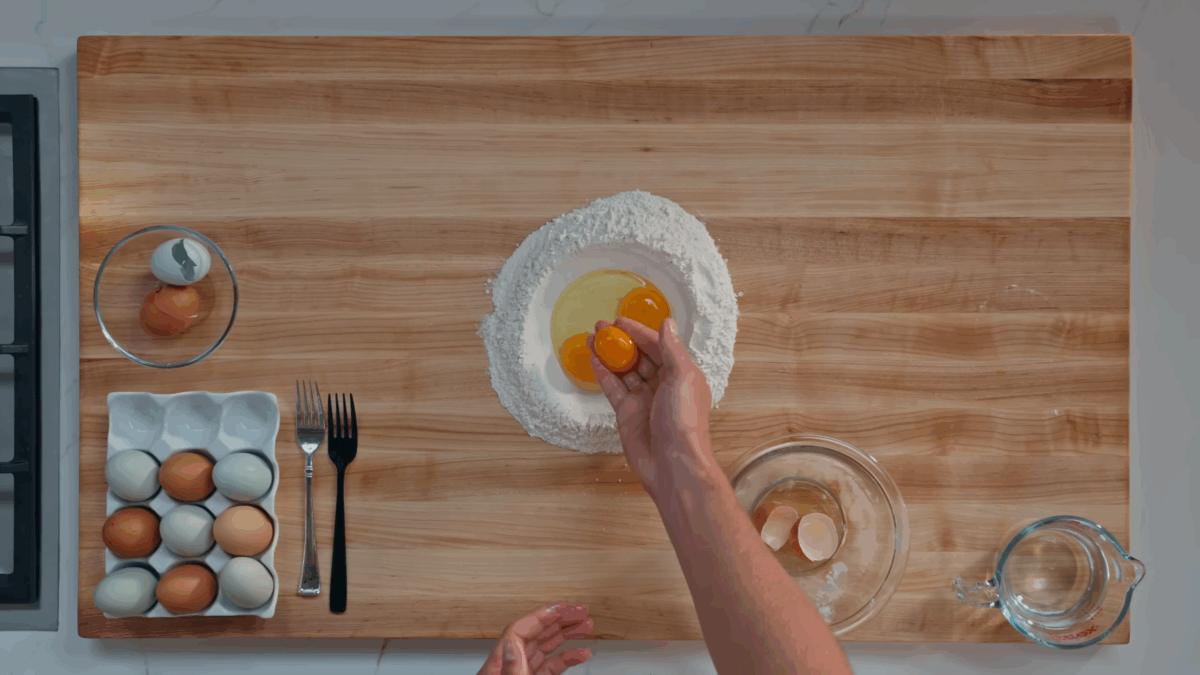
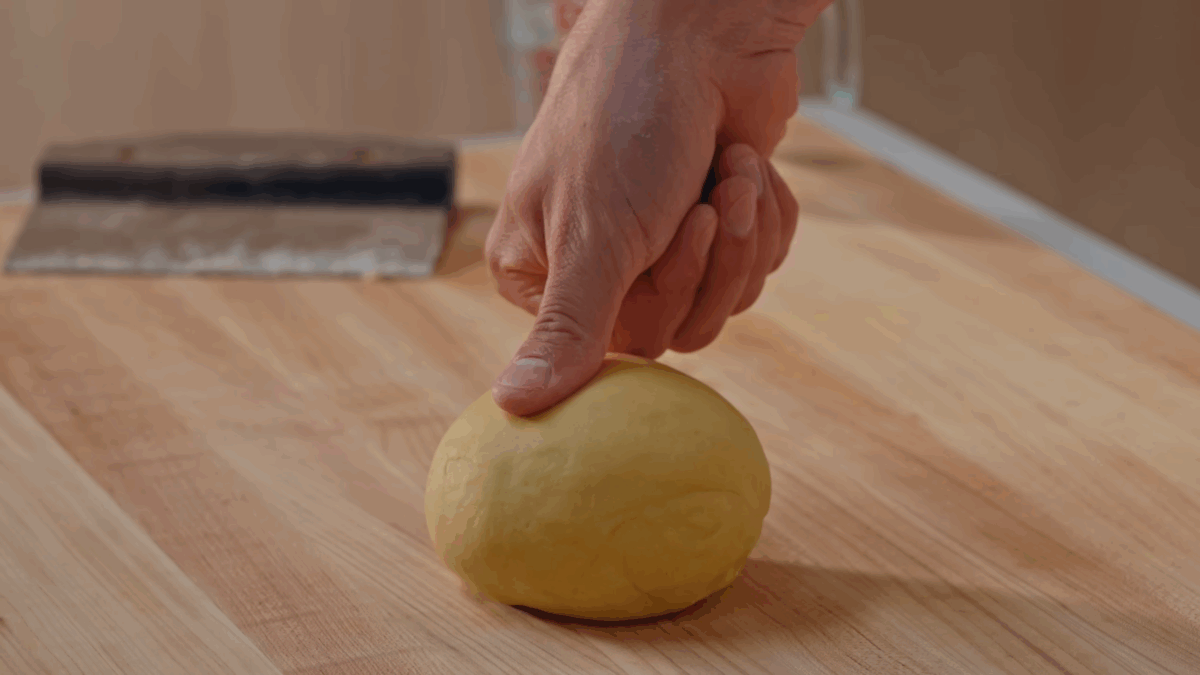
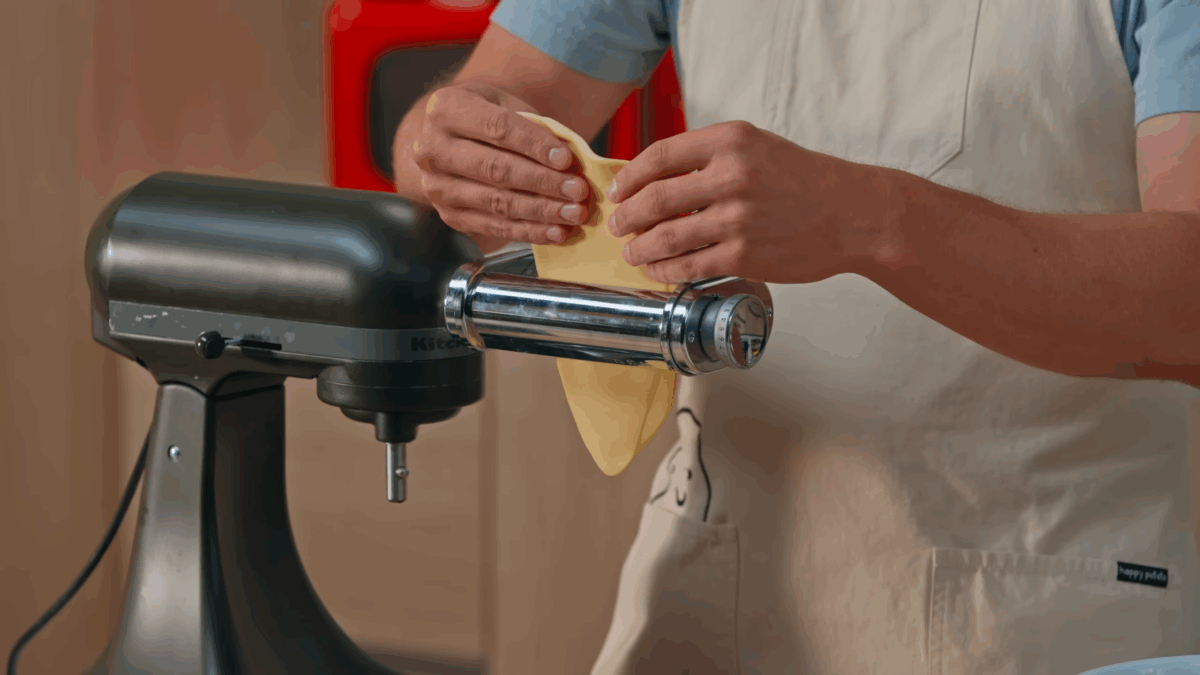
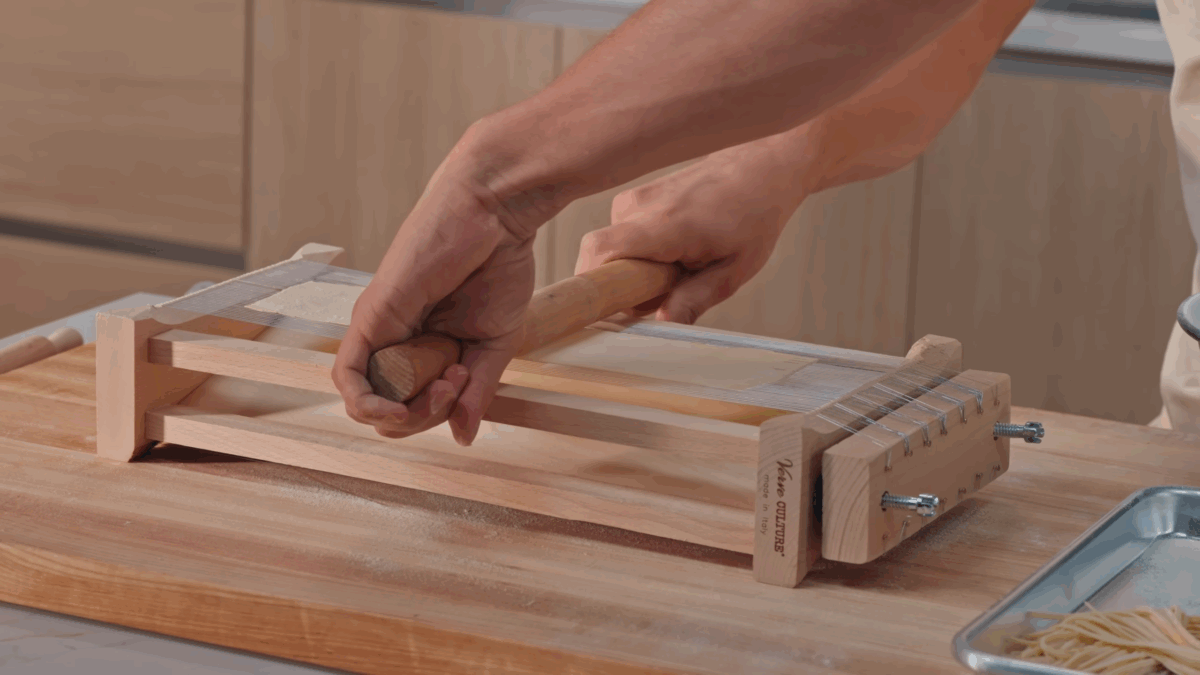
2. Create the Pangrattato
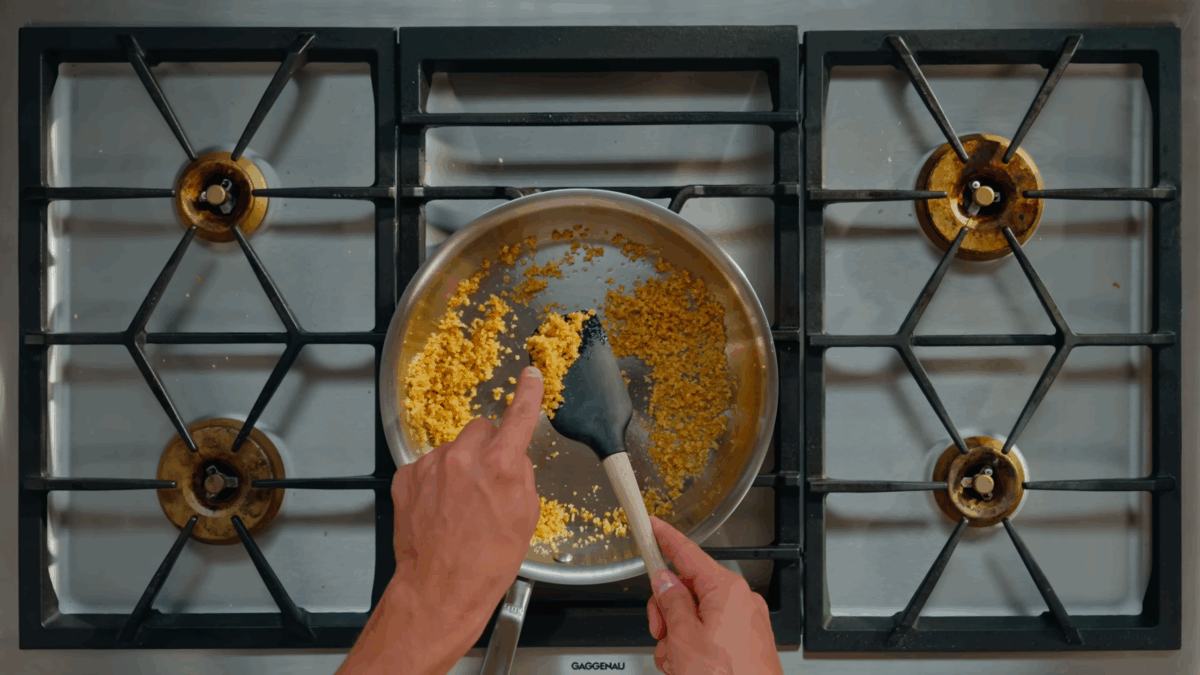
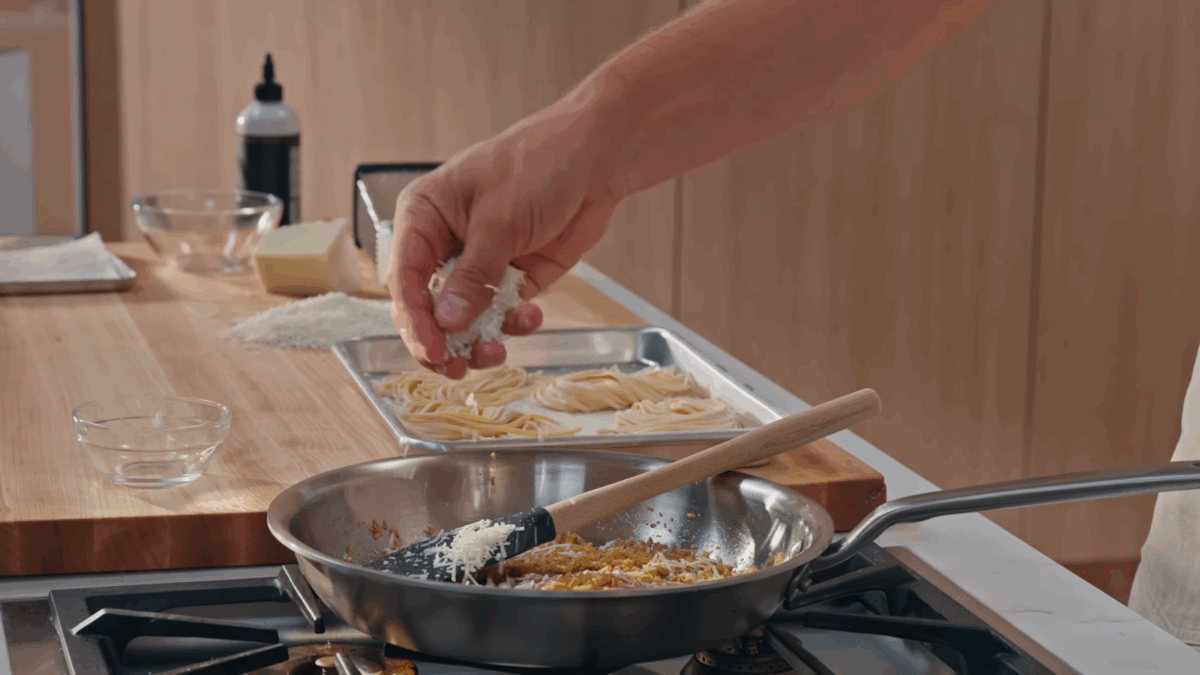
3. Make the Sauce
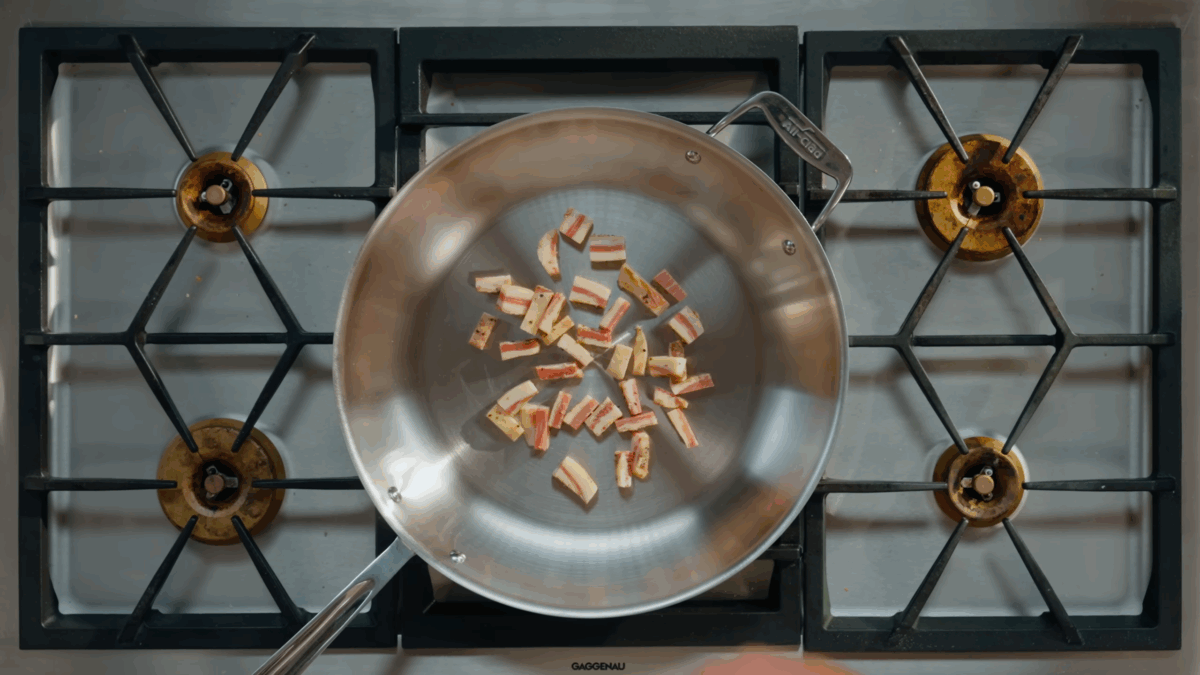
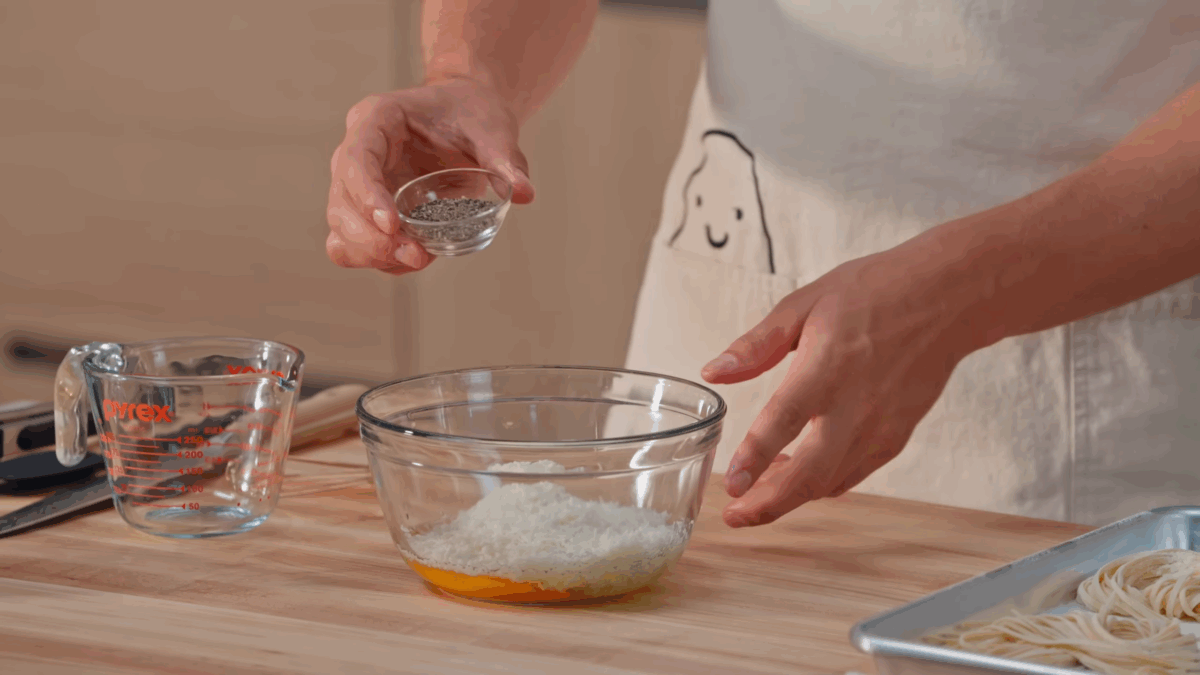
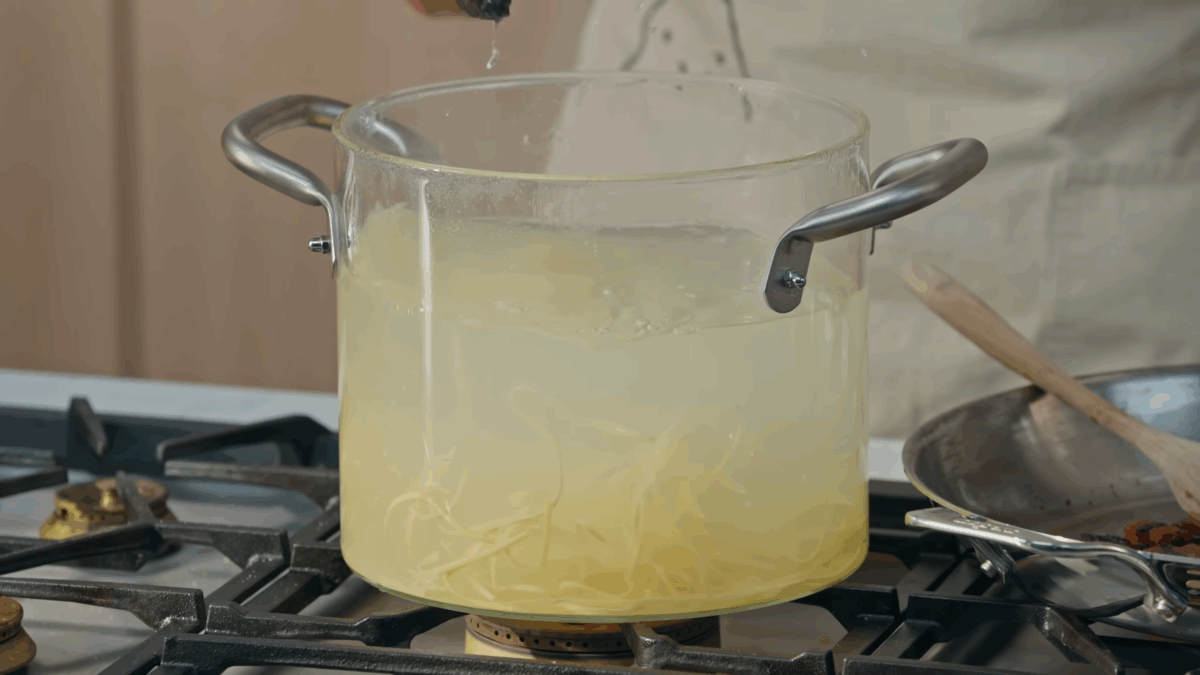
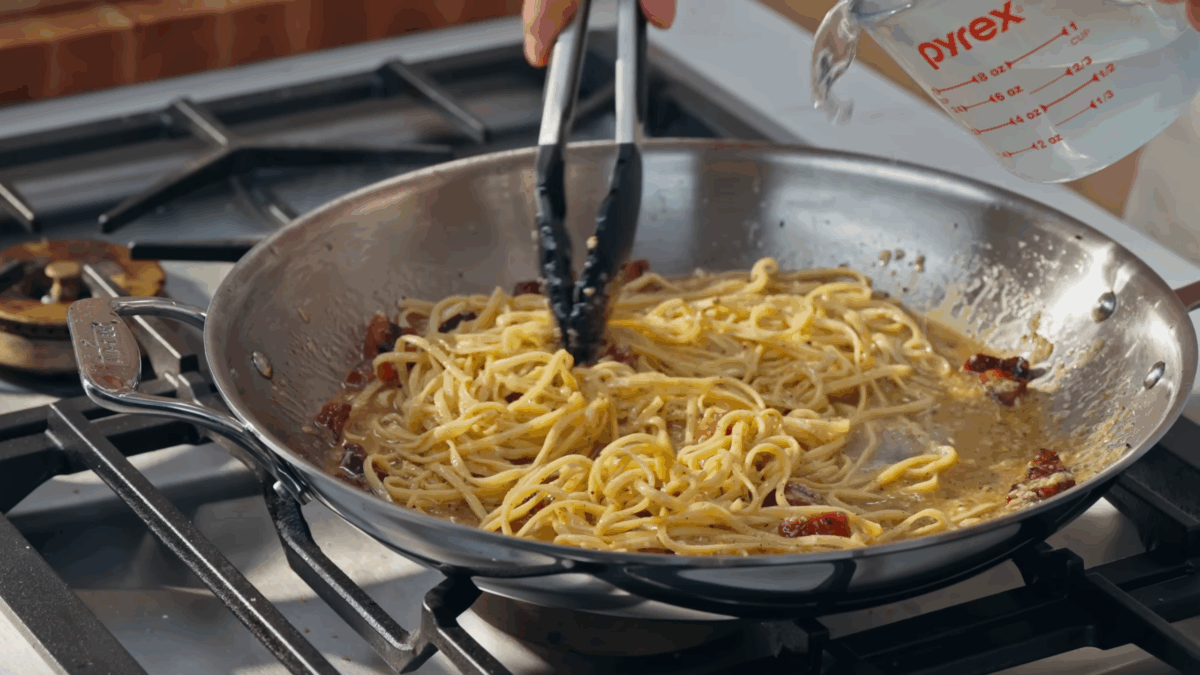
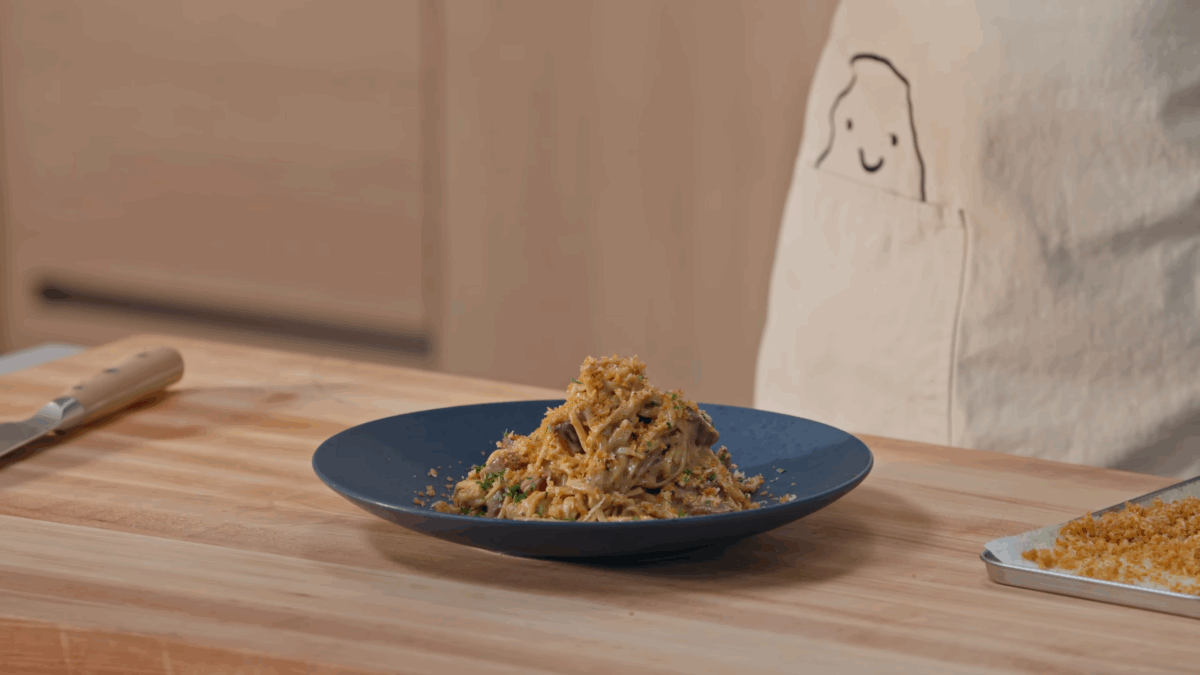
Nick’s Tips for Success
- Start the guanciale in a cold pan. This helps it render slowly, giving you crispy edges and flavorful fat without burning.
- Use room-temperature eggs. Cold eggs can seize when mixed with hot pasta. Room-temperature eggs blend more smoothly into a creamy sauce.
- Avoid overcooking the pasta. Fresh pasta cooks to al dente in just 60 seconds.
- Work quickly. Toss the hot pasta with the egg mixture right away so the heat cooks the eggs gently, creating a silky sauce (not scrambled eggs).
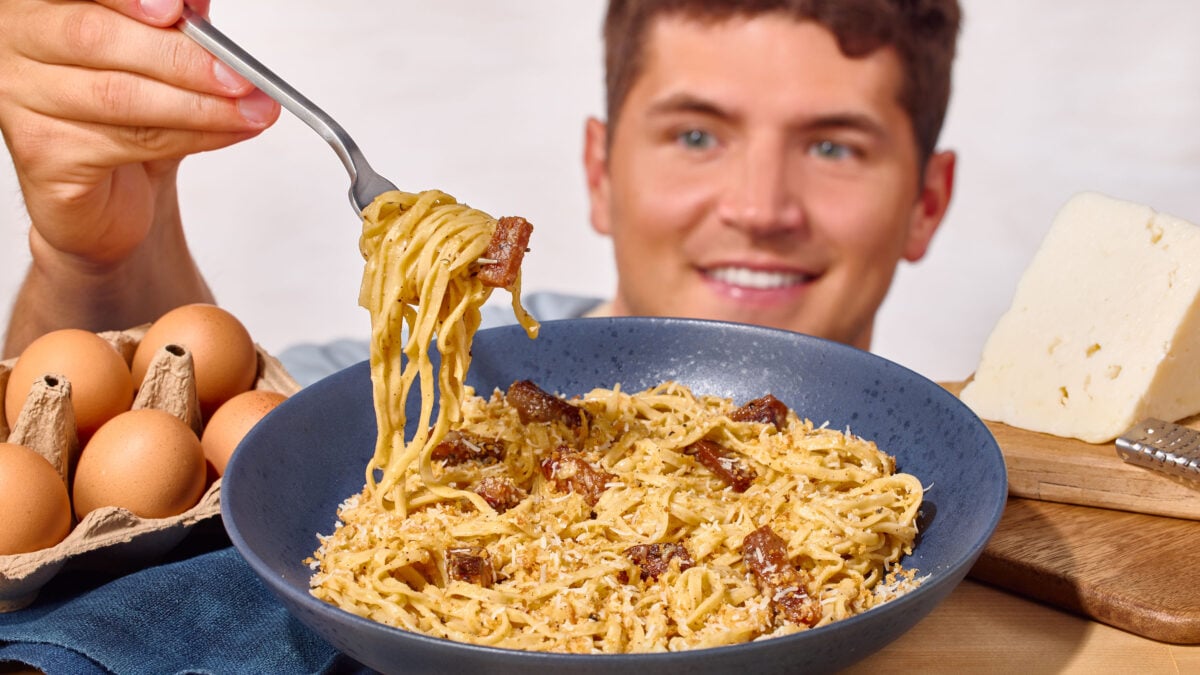
Pasta Carbonara Recipe
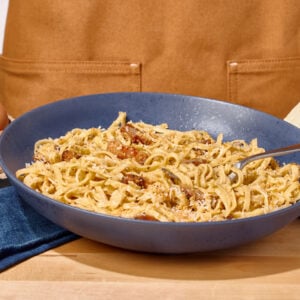
Equipment
- 1 Large Mixing Bowl
- 1 Fork or Whisk
- 1 Stand Mixer with Pasta Roller
- 1 Chitarra or Pasta Cutter
- 1 Large Pot
- 1 Large Skillet
- 1 Pair of Tongs
- 1 Cheese Grater or Microplane
Ingredients
Fresh Pasta
- 2 cup (275 gram) 00 flour
- 2 large egg + 2 egg yolk
- ¼ teaspoon (1 ½ gram) salt
- 1-5 teaspoon (5-25 milliliter) water, as needed
- ½ cup (65 gram) rice flour or semolina, for dusting
Pangrattato
- 1 tablespoon (15 milliliter) olive oil
- ⅓ cup (20 gram) panko breadcrumbs
- ¼ cup (25 gram) Pecorino Romano cheese, grated
Carbonara
- 4 ounce (115 gram) guanciale, chopped into 1-inch (2 ½ centimeter) pieces
- 2 large egg + 2 egg yolk, whisked
- 1 cup (100 gram) Pecorino Romano cheese, grated, plus more for garnish
- 1 tablespoon (7 gram) black pepper, coarsely cracked
- 1 teaspoon (5 gram) salt
Instructions
For the Fresh Pasta
- Add the flour to a clean work surface. Create a well in the middle and add the eggs, egg yolks, and salt into the center. Using a fork, whisk the eggs together, pulling in small amounts of flour as you go. Continue this process until a thick egg paste forms. Then pull in more flour, combining more and more as you go. Once you can no longer combine using the fork, switch to your hands and slowly knead the dough together. Add water, one teaspoon at a time, as needed to help the dough form and bind together. You might not use all of the water.2 cup 00 flour, 2 large egg + 2 egg yolk, ¼ teaspoon salt, 1-5 teaspoon water
- Once all of the flour is incorporated into the dough, knead the dough, using the heel of your hand, for five to ten minutes, or until the surface is smooth and elastic. Dough should pop back when poked, and no crumbs or lumps should be visible.
- Wrap the dough in plastic wrap and leave it at room temperature to rest for at least one hour and up to three hours. The dough should spring back slowly when pressed with your finger after it is fully rested. The dough can also be refrigerated for one day or frozen for up to a month. If chilling, let the dough return to room temperature before continuing to the next step.
- Add ½ cup of dusting flour to a large, shallow bowl.
- Unwrap the dough and divide it into four equal portions. Working with one portion at a time, press the dough piece into a rough rectangle. Cover the remaining portions with plastic wrap or a damp towel so they do not dry out.
- Fit a stand mixer with the pasta roller attachment or secure a hand-cranked pasta maker. Set it to “0”, or the widest setting. With the stand mixer on the slowest setting, or cranking very slow, pass the shortest end of the dough through the roller twice.
- Transfer the pasta to a clean work surface and fold one of the short ends of the dough into the center. Do the same with the other side, completing a letter fold.
- Pass the dough through the widest setting again, leading with the shortest side of the dough. The goal is a smooth rectangle with no scraggly edges. Repeat this process until the dough is a perfect, smooth rectangle.
- Adjust the dial of the pasta attachment to the next, smaller setting and pass the dough through twice. Repeat this process until the dough is 1/8th inch (3.2 milimeter) thick, or on the number six setting. If the rectangle becomes uneven, fold the dough to form smooth edges, go back a setting, and pass through twice before returning to the next smaller setting. Dunk pasta sheets in the flour bowl, to lightly cover all sides.
- Line two sheet trays with parchment and rice flour or semolina. Add the pasta to one of the sheet trays, adding additional flour and folding the dough over to fit the sheet tray. Completely dusting the dough sheets prevents the dough from sticking together.½ cup rice flour or semolina
- Cover dough sheets with a towel or plastic wrap.
- Repeat the dough rolling process with the additional dough balls.
- Cut the pasta sheets to fit the length of a chitarra. Add each dough sheet to the chitarra, then using a small rolling pin, gently roll across the surface to cut the pasta into strips.
- Toss spaghetti in the bowl with flour to coat and transfer to a pre-lined sheet tray, and repeat until all of the pasta is cut. Cover pasta with a towel or plastic wrap until ready to cook.
For the Pangrattato
- In a medium skillet over medium heat, add the olive oil. Once lightly shimmering, add the breadcrumbs and toss to combine. Cook for three to four minutes, stirring frequently, or until the breadcrumbs are deeply golden brown.1 tablespoon olive oil, ⅓ cup panko breadcrumbs
- Remove from the heat and add grated Pecorino. Stir to combine. Set aside until ready to serve.¼ cup Pecorino Romano cheese
For the Carbonara
- In a large skillet, add the guanciale. Turn the heat to medium. Adding it to a cold pan will help it render slowly, without burning. Cook for nine to eleven minutes, or until the guanciale is crisp in places and tender in others. Remove from the heat.4 ounce guanciale
- In a medium bowl, add the egg yolks, Pecorino, and black pepper. Whisk to combine and set aside.2 large egg + 2 egg yolk, 1 cup Pecorino Romano cheese, 1 tablespoon black pepper
- While the guanchile sauce is cooking, bring a large pot of water to a boil. Salt the water, then add the pasta and stir to prevent the pasta from sticking. Cook for 60 seconds, or until the pasta is al dente.1 teaspoon salt
- Reserve one cup of pasta water and drain the pasta.
- Add the pasta to the skillet with the guanciale. Working quickly, add the egg yolk mixture to the skillet, along with ¼ cup reserved pasta water. Use tongs to gently, but quickly, incorporate the egg yolk mixture with the pasta. The sauce should cling to the noodles, have a glossy texture, and have the consistency of gravy. If the pasta looks too dry, add more pasta water, a few splashes at a time, and mix again.
- Divide the pasta between four warm bowls, then top with Pecorino, pangrattato, and black pepper. Serve immediately.
Video

Notes
- Refrigerator: Store leftover pasta carbonara in an airtight container in the fridge for up to two days.
- Reheat: Warm leftovers gently in a skillet over low heat with a splash of reserved pasta water, broth, or milk as needed to loosen the sauce. Stir constantly to prevent the eggs from scrambling. Alternatively, microwave in short 30-second bursts at 50% power, stirring in between.
Nutrition
Nutrition information is automatically calculated, so should only be used as an approximation.
 Like this recipe? Rate & comment below!
Like this recipe? Rate & comment below!FAQs
Traditional pasta carbonara doesn’t include vegetables, but you can fold in peas, sautéed mushrooms, or even roasted zucchini for extra flavor and nutrients. Just add them at the end of cooking when you toss the cooked pasta with the carbonara sauce.
A grainy sauce usually means the eggs cooked too quickly and scrambled. To prevent this, remove the skillet from direct heat before adding the egg mixture, and use reserved pasta water to loosen the sauce until it’s silky and glossy.
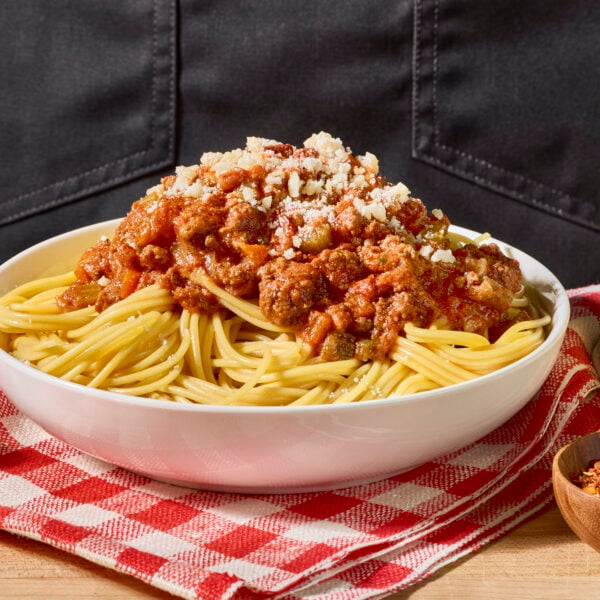

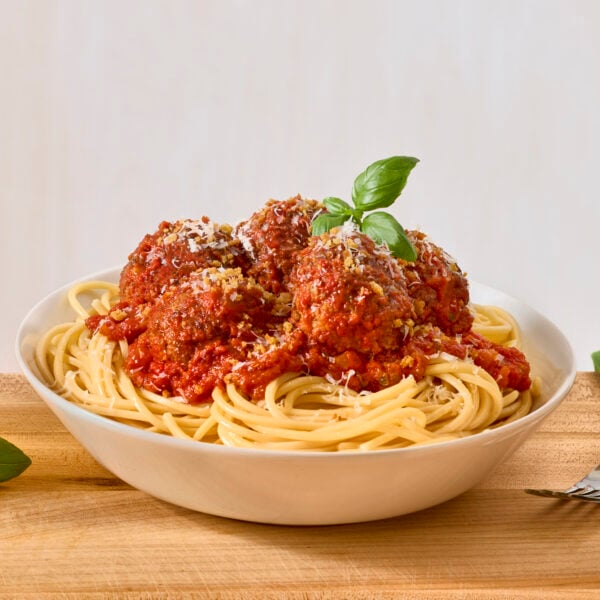

Awesome recipe. BTW I’m a huge fan and I’ve been watching for 4 years😉
the food is home made and every recipe is available
I love the way you make your pasta it’s pocket friendly for everyone,,
No carbonara has compared to what I tasted in Italy – except for this one! It’s the only carbonara I’ll eat now!